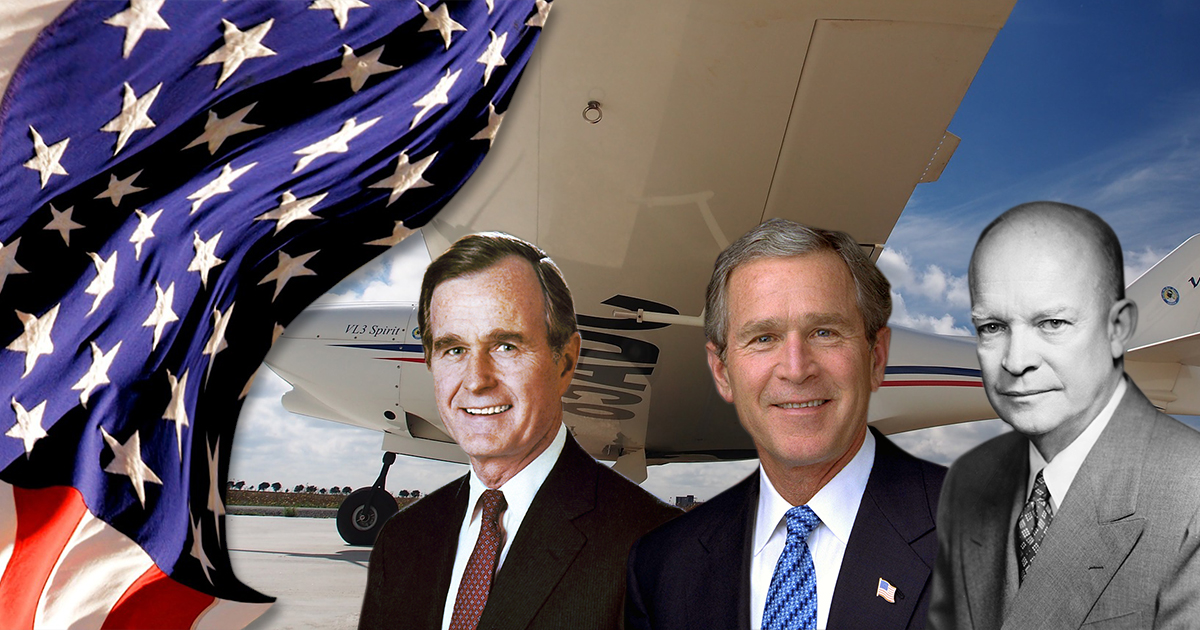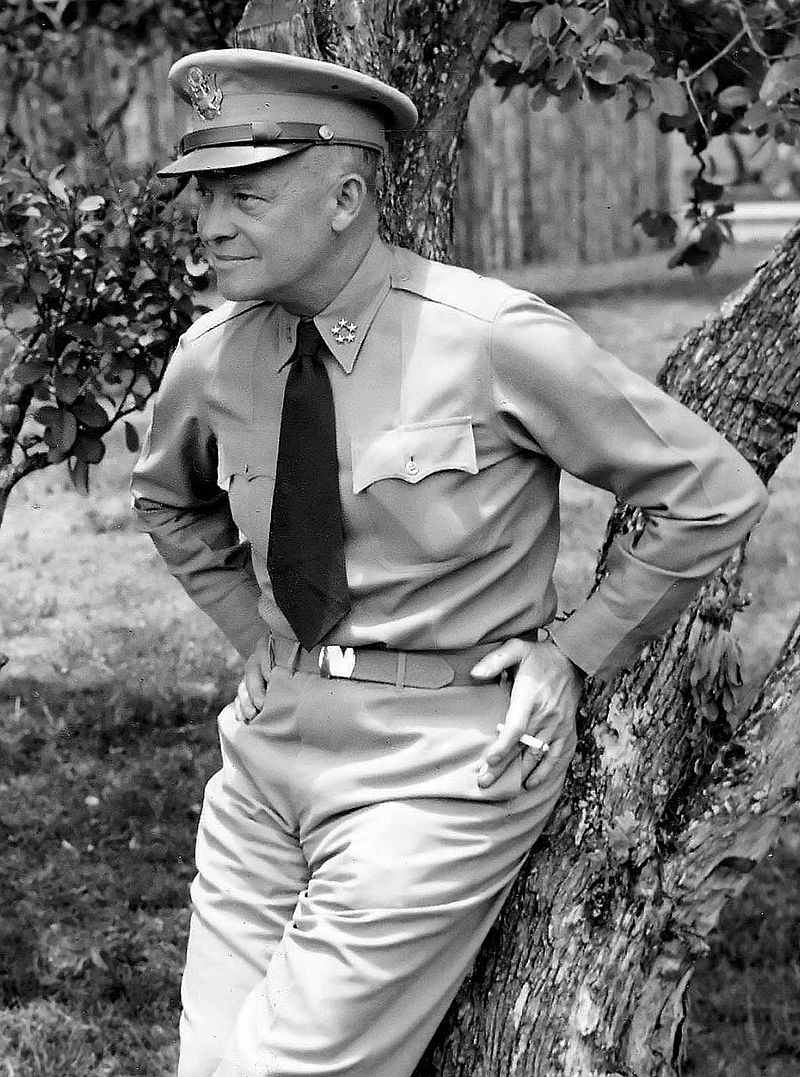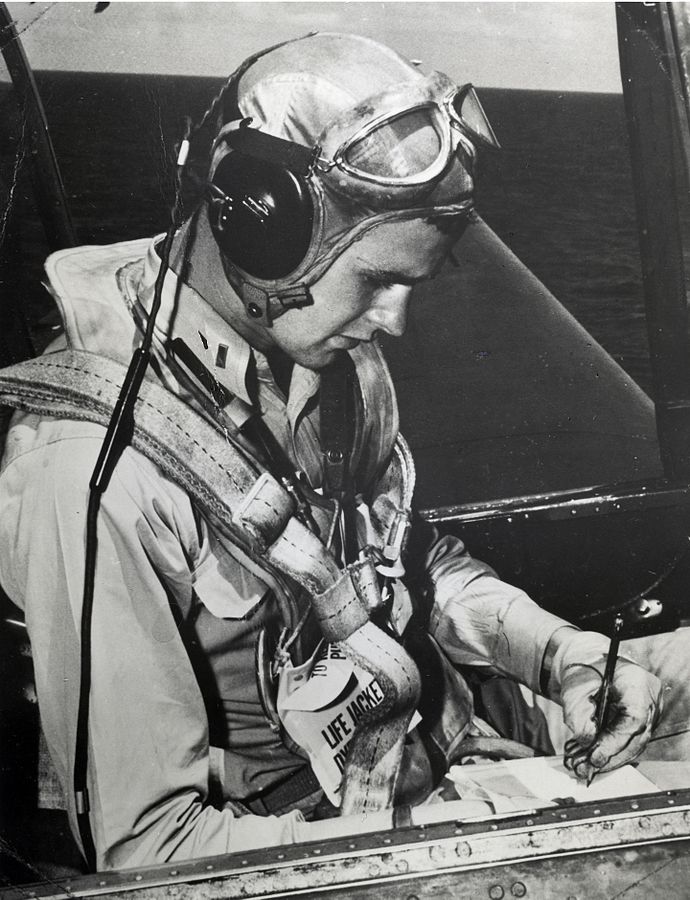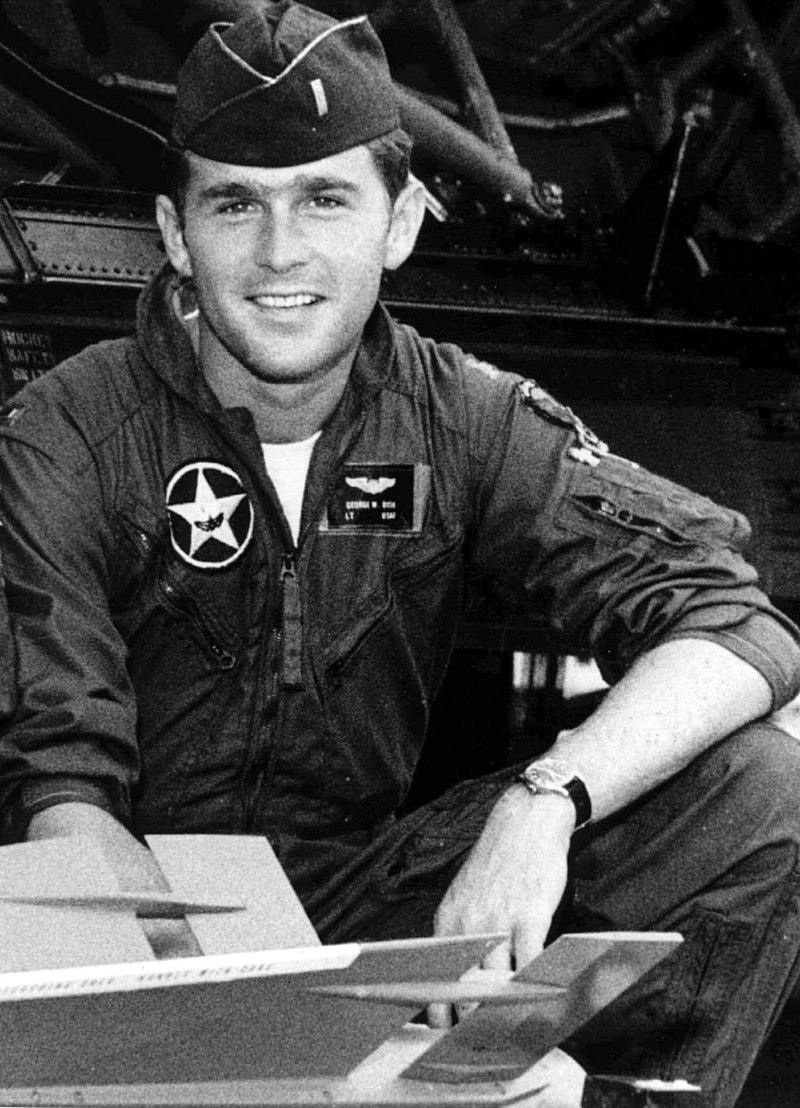Before They Were Presidents of the United States of America, They Were Pilots
By on Feb 20th 2017
Franklin D. Roosevelt has the distinction of being the first US president to ever fly in an aircraft, while Dwight D. Eisenhower was the first president to travel in an airplane with the designation Air Force One. It was Theodore Roosevelt, however, who was the first [former] president to ever fly in an aircraft in October 1910.
Since presidents (and former presidents) have first started to fly, a majority of them have only ever had the honor of being passengers aboard aircraft. However, there are a few men who went from manning an aircraft to manning a country–and the U.S. has actually had more aviators-turned-leaders than just about any other country.

From Pilots to Presidents
Dwight D. Eisenhower

“Ike” Eisenhower was the 34th President of the United States and served two terms from 1953 to 1961. Besides being the first president to fly in a plane called Air Force One, he was the first president to employ a helicopter when in office on July 12, 1957. Fun fact: although helicopters had been in operational use by the U.S. military for over a decade, the Secret Service barred them from the nation’s chief executive use (except in cases of emergencies).
Eisenhower graduated from West Point in 1915. Instead of an assignment in the Philippines, as he requested, Second Lieutenant Eisenhower was assigned to the 19th Infantry at Fort Sam Houston in San Antonio, Texas. He worked in logistics and infantry until 1918.
In May 1917 he was promoted to Captain. When the United States entered WWI, he requested an overseas assignment but was denied. Eventually, he received orders for the new tank corps and was promoted to brevet lieutenant colonel in the National Army. He never saw combat during the war. He continued to work in the military despite its difficulties post-war.
In the 1930s, Eisenhower was posted as chief military aide to General MacArthur, Army Chief of Staff. In 1935, he accompanied MacArthur to the Philippines. There he served as an assistant military advisor to the Philippine government in developing their army. In 1936, Eisenhower was promoted to Lieutenant Colonel. It was during this time when Eisenhower learned to fly. In 1937 he made a solo flight over the Philippines and in 1939 he obtained a private pilot’s license at Fort Lewis. Because Eisenhower earned a private pilot’s license, he was never rated as a military pilot.
Even though being a pilot was not technically a part of his military career, that ability to fly is an achievement few US Presidents could boast.
George H.W. Bush

George Herbert Walker Bush was the 41st President of the United States (1989-1993) and the 43rd Vice President of the U.S. (1981-1989). Besides his role as President, VP, congressman, ambassador, and Director of Central Intelligence, he was one of the youngest naval aviators of WWII and has the most impressive track record of pilot-Presidents.
After the attack on Pearl harbor in December 1941, George Bush decided to join the Navy. After graduating from Phillips Academy in 1942, he became a naval aviator at only 18 years old. On June 9, 1943, he was commissioned as an ensign in the United States Naval Reserve at Naval Air Station Corpus Christi. This was only 3 days before his 19th birthday, making him the youngest naval aviator at the time.
In September 1943, Bush was assigned to Torpedo Squadron (VT-51) as the photographic officer. In 44, he was based on the USS San Jacinto Navy aircraft carrier as a member of Air Group 51. They were victorious on one of WWII’s largest battles: the Battle of the Philippine Sea.
On August 1, 1944, Bush was promoted to Lieutenant (Junior Grade). When his squadron commenced operations against the Japanese in in the Bonin Islands, Bush piloted a Grumman TBM Avenger that was one of 4 aircraft that attacked the small naval base at Chichijima. During the attack, they encountered severe anti-aircraft fire, and Bush’s Avenger was hit. Though his aircraft caught on fire, Bush managed to complete his task and release his bombs over his target. He was able to fly several miles away from the island and bail out of the aircraft, though his fellow crewmember’s parachute did not open.
George Bush was honorably discharged in September 1945.
Through 1944, Lieutenant Junior Grade Bush flew 58 combat missions; for those missions, he received the Distinguished Flying Cross and 3 Air Medals. The USS San Jacinto was also awarded the Presidential Unit Citation.
George W. Bush
 George Walker Bush followed closely in his father’s footsteps, both as a pilot and as president. The 42nd President of the United States, who served his two terms between 2001 and 2009, was also the Governor of Texas from 1995 to 2000, as well as a member of the National Guard.
George Walker Bush followed closely in his father’s footsteps, both as a pilot and as president. The 42nd President of the United States, who served his two terms between 2001 and 2009, was also the Governor of Texas from 1995 to 2000, as well as a member of the National Guard.
On May 27, 1968, George W. Bush joined the 147th Fighter Interceptor Group of the Texas Air National Guard. he committed to serve for 6 years (until May 26, 1974), with 2 years active duty while training to fly and 4 years part-time duty. After his 6 weeks of basic training, he began 54 weeks of flight training in Georgia at Moody Air Force base. In December 1969, he began 21 weeks of fighter interceptor training on the Convair F-102 Delta Dagger at the 147th's Combat Crew Training School in Houston. His first solo flight was in March 1970 and Bush graduated in June 1970. When he graduated, his commitment for 2 years active duty was fulfilled.
In late 1970, Bush was promoted to First Lieutenant, on the recommendation of Lt. Col. Jerry B. Killian, commander of the 111th Fighter Squadron.
Bush carried out part-time Guard duty as an F-102 pilot through April 1972. He logged a total of 336 flight hours. As a part-time National Guardsman, he volunteered his services to a number of assignments, including a political campaign. On October 1, 1973, he was honorably discharged from the Texas Air national Guard; Bush was then transferred to the inactive reserves in Denver, Colorado. George Bush's military service ended when he was discharged from the Air Force Reserves November 21, 1974.
George W. Bush's military service in the National Guard is not without controversy. During the 2004 presidential campaign, potential issues regarding his time in the texas National Guard gained widespread public attention. The controversy included whether he fulfilled his requirements of his military service contract (regarding his commitment to part-time duty) and why he lost his flight status.
Sources:
http://www.airspacemag.com/history-of-flight/from-...
https://airandspace.si.edu/stories/editorial/ike-a...
https://en.wikipedia.org/wiki/Dwight_D._Eisenhower...
https://en.wikipedia.org/wiki/George_H._W._Bush
https://en.wikipedia.org/wiki/George_W._Bush_milit...







